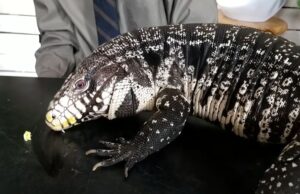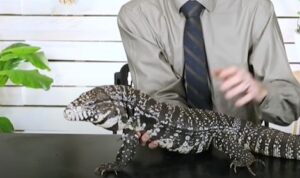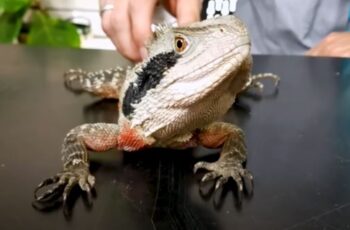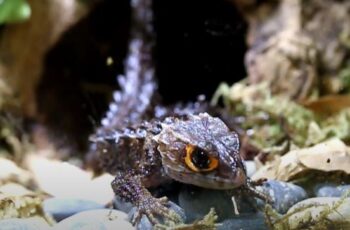Description
The Argentine black-and-white tegu (Salvator merianae) is a large lizard that grows up to 4 feet long. It is black and white with a strip along the tail. The chicks have a blue color on their heads that fades after a few months.
Two other tegu species have been found in South Florida and have the potential to become invasive species. The yellow tegu (Tupinambis teguixin) grows up to 2–3 feet long and has black and yellow stripes on its body. Red tegus (Salvator rufescens) can grow up to 4.5 feet long, and males have large jaws.

Impact
Tegus eat fruits, vegetables, eggs, insects, dog or cat food, and small animals such as lizards and rodents. In Florida, tegus have dug up crocodile and turtle nests and eaten the eggs. Growing and spreading tegu populations pose a threat to native wildlife such as alligators, sea turtles, ground-nesting birds and small mammals.
Where to find them
Argentine black and white tegus are breeding in areas of Miami-Dade and Hillsborough counties. The large population in South Florida is concentrated in Florida City and is spreading to new areas. There is also a small breeding population of golden tegus in Miami-Dade County. Red tegus have been seen in Florida but are not known to breed.
Tegus spend most of their time on land and are often seen on roadsides or other disturbed areas. They can swim and can stay submerged for long periods of time. Tegus are mainly active during the day. They spend the colder months of the year in burrows or under shelter.


